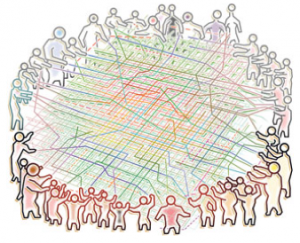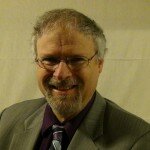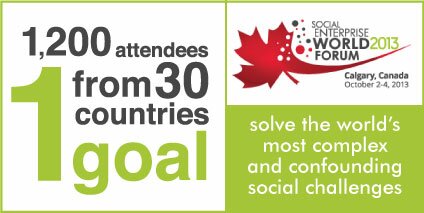Creating Good Work: Identifying Commonwealth-Building Healthy Economies
By Ron Schultz, founder and President of Entrepreneurs4Change
- Ron is appearing in the SEWF 2103 main stage plenary "The Future of Social Enterprise: Authors Panel”.
- People who find this article of interest may enjoy the SEWF 2013 program streams on Social Innovation and Cross Boundary Collaboration.
- This article originally appeared on The Corporate Responsibility Newswire, a wonderful digital media platform and the leading global source of corporate social responsibility (CSR) and sustainability news.
- The feature picture of this article is courtesy of Compfight / A Flickr Search Tool.
Creating Good Work and building a healthy organizational economy is a powerful and effective way of doing business. Paul Herman of the HIPInvestor, (which has scored and rated thousands of corporations based on the positive Human Impact they return -- Doing Good -- plus the Profit they generate-HIP), has demonstrated, that the corporations with the highest HIP scores outperform the market by five percent.
Those are real numbers (based on the HIP100 Index -- a reformulation of the S&P 100) that show how “doing good” effectively impacts the economy of an organization, significantly.
So, how do we go about building a healthy organizational economy and creating good work?
Two Key Questions
Imagine you are looking out over the landscape of your organization or your community. What do you see?
Before you answer that, let me give you two ways that you might see what’s in front of you.
1) You can look out and see what piece is missing from the landscape. Implicit in this point of view is an understanding of the carrying capacity of the environment – what the landscape can accommodate and hold –and what pieces belong and don’t.
Or perhaps:
2) You can look out across the landscape and see, not what’s missing, but what could be there – creating something new where nothing had been before – an innovative vision that establishes a whole new horizon for your organization’s opportunities.
 From a mission and vision perspective, many organizations (and communities) often operate from only one view or the other. They define their strategies as either “we’re constantly on the lookout for the pieces missing from our success (a very mechanical view), or we’re always looking for the next something that is both new and now, (an innovative view).
From a mission and vision perspective, many organizations (and communities) often operate from only one view or the other. They define their strategies as either “we’re constantly on the lookout for the pieces missing from our success (a very mechanical view), or we’re always looking for the next something that is both new and now, (an innovative view).
The Healthy Organizational Economy
But what happens when we have an organization that successfully incorporates and embraces both views simultaneously? That organization is moving toward what we call a healthy organizational economy.
It is an organizational health that recognizes what’s possible and actionable, while being cognizant of the limitations of its capacities and the existence of its needs. In doing so, as in any economy, it then has the capability to create enough wealth for it to thrive and sustain further healthy development.
In our last post in this blog series, we discussed the primary notions we see in building a healthy economy: Nurturing resilience, creating meaningful and purposeful work through being of benefit to others, and identifying common wealth. But it is also essential to be able to see both the mechanics of the landscape (what is missing) and the visionary aspects (what could be there) to bring about a healthy operational implementation.
The Organizational Commonwealth
One approach to actualizing this shared view is to explore more deeply the idea of organizational commonwealth. In doing so, we see how quickly it cuts to the core of many organizations in which departments and divisions feel the need to horde resources that actually belong to the organization or community as a whole.
By shifting the models, rules and behaviors that encourage hording, and begin the process of educating and training people to recognize that organizational commonwealth is not “mine,” we start creating a new mindset that moves toward a more healthy internal economy, one that recognizes the interdependency of both landscape views.
 Examples of commonwealth in our society today are not hard to find – open source software is certainly at the top of the list. But when we begin to move this concept indoors, into the interiors of our organizational work and ask departments to share resources, it becomes evident that collaboration has a very narrow definition.
Examples of commonwealth in our society today are not hard to find – open source software is certainly at the top of the list. But when we begin to move this concept indoors, into the interiors of our organizational work and ask departments to share resources, it becomes evident that collaboration has a very narrow definition.
These notions apply if the organization we’re discussing is providing products and services that are returning billions or providing human services to the poorest of the poor or is a community seeing to the need of its constituents. Commonwealth is what we share together – like our streets, rivers and parks. This is not some alien term attempting to re-describe the lives we live, or some socialist conspiracy threatening our capitalist ways of life.
It is a recognition of our interdependence.
How Interdependence Works
Even within the most industrial of settings, the work being done is serviced by someone before us and then by us serving someone coming next down the line. Our economy is certainly not as linear as a production line, but it is still a fully interdependent operation, and within that system there are uncountable examples of what we share as part of our commonwealth and our interconnectivity. We don’t have to begin from square one. We just have to collaboratively find ways to bring together our two visions of the same landscape and then build from what we already own together.
As we hope this blog will continually make clear, creating good work and building a healthy organizational economy not only benefits the community or organization that undertakes this effort, but as Paul Herman’s HIPIndex demonstrates, it can translate into greater market profitability.
But greater profitability is not and should not be the driving force for these efforts.
A healthy economy can survive the swings of fortune, but it also provides opportunities to create innovative ways to solve the issues we encounter, together – if, of course, we are capable of shifting the rules and behaviors that keep us looking at the landscape in front of us from just one perspective.
Are you ready to build a healthy economy? Is your organization or community ready to begin? We can build it together.
More About Ron Schultz
Schultz is the founder and President of Entrepreneurs4Change. The enterprise works with green and social businesses, veterans, and marginalized communities providing entrepreneurial education, access to funding and capital, and ongoing nurturing and support for the businesses once they are operating. His new book – Creating Good Work – The World’s Leading Social Entrepreneurs Show How to Build a Healthy Economy was released by Palgrave Macmillan in Feburary, 2013. He has written or co-written and had published 22 previous books. His last book, Coherence in the Midst of Complexity, written with Hugo Letiche and Michael Lissack, was published by Palgrave-Macmillan in January, 2012. Other books include: Adjacent Opportunities – Sparking Emergent Social Action (Emergent Publications, Impact Books, 2010) Unconventional Wisdom (HarperCollins, 1994); Open Boundaries: Creating Business Innovation through Complexity, (with Howard Sherman) (Perseus Books, 1998); and The Mindful Corporation: Liberating the Human Spirit at Work, (with Paul Nakai) (Leadership Press, 2000).







